|
Location: The wildfire is in the Jemez Ranger District, near the northwest boundary between the Valles Caldera National Preserve and the Santa Fe National Forest, adjacent to Forest Road 144 and Twin Cabins Canyon.
Start Date: June 23, 2025, at 1:00 p.m. Size: 40 acres Containment: 10% Cause: Under investigation Vegetation: Burning in oak brush, ponderosa pine, and Douglas fir. Resources: 40 personnel Overview: Fire crews are actively managing the 40-acre wildfire using full suppression tactics. Currently, the wildfire does not pose a threat to people or property. Highlights: Fire line around the perimeter held overnight. This morning the wildfire reduced in complexity transitioning to a Type 5 incident. A Type 5 incident is the lowest level of complexity in incident management, typically manageable with minimal resources. Fire crews continue to mop up, which means extinguishing and removing burning materials near control lines. Currently, 40 feet from the fire line has been mopped up around the fire perimeter. Weather: Conditions will be mostly sunny and clear on Friday and Saturday, with showers and thunderstorms expected on Sunday and continuing into next week. Safety: The health and safety of firefighters and the public are always the highest priority. Please avoid the area while crews manage the Twin Cabins Wildfire. Drones and firefighting aircraft are a dangerous mix and could lead to accidents or slow down wildfire operations. If you fly, we can’t. Smoke: Smoke may be visible to communities along New Mexico State Road 96 and New Mexico State Road 4. Fire Information: Contact Claudia Brookshire, Public Affairs Officer, Santa Fe National Forest Phone: 505-607-0879 (available from 9:30 a.m. to 5:00 p.m.) Email: [email protected] Links: Santa Fe National Forest website, New Mexico Fire Info, Inciweb, and Santa Fe National Forest social media (Facebook and X). About the Forest Service: The USDA Forest Service has for more than 100 years brought people and communities together to answer the call of conservation. Grounded in world-class science and technology– and rooted in communities–the Forest Service connects people to nature and to each other. The Forest Service cares for shared natural resources in ways that promote lasting economic, ecological, and social vitality. The agency manages 193 million acres of public land, provides assistance to state and private landowners, maintains the largest wildland fire and forestry research organizations in the world. The Forest Service also has either a direct or indirect role in stewardship of about 900 million forested acres within the U.S., of which over 130 million acres are urban forests where most Americans live.
0 Comments
By Felicia Fredd The cactus pictured above is Escobaria vivipara, or Spiny Star cactus—a species that grows right here in Abiquiú, NM. According to the Lady Bird Johnson Wildflower Center, it's actually the most widespread cactus in North America, and yet I had never seen it in my life until two weeks ago, when I stumbled upon a field of them in bloom. The color you see in the photo above is not enhanced; it is the actual deep rich color that appears for the first two hours of the flower’s opening. After that, the petals soften into a silky wash of bright pink and silver. It’s one of the final cactus blooms of spring.
The Cholla bloom, occurring now, will mark the end of this year’s cactus flower season. It is now too hot and dry for them to expend the energy. As I write, I’m waiting for the big rainstorm (that one was supposed to begin yesterday) to finally provide the deep watering even my cacti need. I don’t have irrigation water for my desert garden project in the badland foothills of Abiquiú, where efforts so far have been a labor of observation, small moves, and more observation. I have found native plants I can work with, and important structural considerations I can provide to help native plants grow here, but it’s still tricky. In previous articles, I’ve covered a few of the many reasons why native plants are so special, but it’s also important to acknowledge that even the most rugged natives can be hard to grow. Plants are just so bloody complicated. Sure, you’ve seen things growing in cracks in the sidewalk, or dangling from cliff faces, but it’s 50/50, or less, as to whether they’ll agree to grow where you intend. My cacti, it turns out, are some of the most cooperative, easy to propagate, fast growing, and fascinating plants in my baby gardens. Ultimately, I’m envisioning a mosaic of tightly clustered cacti mounds full of texture and form. That will take a minute, but in the meantime, I’ve also found some good companion plants that can help build out texture, cover soil, and provide a little dappled shade relief from the blazing sun (cacti can benefit from a little shade too). Indian rice grass is fantastic for this. It just shows up, basically. That, and an annual buckwheat that reseeds every year —a little fuzzy silver rosette that will eventually form a delicate umbrella of flowers. It’s an odd plant - best ‘en-masse’ as they say, and looks like baby’s breath. I know that many New Mexico gardeners are learning what it means to grow plants in increasingly extreme conditions, with tighter limits on time and water. Many are also becoming more interested in ecological gardening. According to AI, ‘natural gardening’ is now the most common garden topic on the internet as people are actively seeking ideas and inspiration. So, I’d like to revisit something beautiful: the vivid, if fleeting, sequence of cactus blooms that unfolded this spring in Abiquiú over a period of six weeks. It’s hardly a comprehensive list of the species growing here—or that could grow here. I’m just limited to showing plant photos that actually belong to me. Check out more at: https://www.americansouthwest.net/plants/cacti/new-mexico.html Maximalism is the second most explored garden topic. To me, maximalism is best exemplified by the art of Dr. Seuss. I think the current vibe on that is essentially the same thing - layered, bold, weird, and wonderful. Cacti fit right in to that trend as well. In first to last to bloom order: By Karima Alavi Those of us who visit Plaza Blanca, the famed rock formation on the property of Dar al Islam, are used to approaching Abiquiu on paved roads. The next step is to drive up a slightly bumpy dirt road to the Plaza Blanca parking lot, before walking down to the white sandstone cliffs eroded by storms, winds, and water, the same elements that slowly cut gashes through them. This site offers a quiet haven to hikers, artists, and those who seek respite from the stress of daily life. I, for one, have taken for granted the ease with which I can visit Plaza Blanca, especially after reading Maria Chabot’s exquisite description of her visits to the site with her friend, Georgia O’Keeffe. Chabot was a Texas-born writer, photographer, and advocate for indigenous rights. Her strong interest in preserving native arts led her to facilitate the development of Santa Fe’s Indian Market. With their shared interest in the arts, Maria and Georgia O’Keeffe quickly became close friends. Chabot assisted with the restoration of the Abiquiu home O’Keeffe purchased, noting the charming, but rustic condition of the property that was apparently inhabited by some very stubborn pigs. When in need of a break, when seeking the tranquility that nature offers, they jumped into Georgia’s Ford coupe and made their way, with absolutely no roads, up the arroyos toward the area they called the “White Place.” An arroyo is a natural channel, or wash, that is dry most of the year. The problem is that they can turn treacherous in minutes by filling with water, rocks, and branches that tumble down a mountain at a dangerous speed. For this reason, O’Keeffe and Chabot knew exactly what to watch out for—clouds. Those simple, white, innocent looking clouds that could signal a warning that you’re driving your Ford straight toward a flash flood.
Through her many paintings of the “White Place,” O’Keeffe has made people aware of this natural treasure, a hidden gem, situated on the land owned by Dar al Islam. (See information below if you wish to visit the site.) The teachings and spiritual practice of Islam emphasize the concept of Environmental Stewardship, emphasizing the religious obligation of Muslims to be stewards of the earth. It is incumbent upon Muslims to protect natural resources which, as part of God’s creation, are considered a sacred gift. Islam’s religious text, the Qur’an, encourages humans to be humble toward the earth: “The true servants of the Most Compassionate are those who walk on the earth humbly” (25:63). Scholars point out that this verse encourages us to do the least damage while on the earth, and to protect the environment for future generations rather than just thinking of ourselves. Environmental activism in an Islamic context also unites the concept of justice with that of generosity. Chapter 54, verse 28, of the Qur’an makes it clear that resources are to be shared equally, even if one person (or tribe) has received more abundance than others: “And let them know that the water is to be divided between them, with each share of water equitably apportioned.” In this way, people maintain a sense of justice, while avoiding greed or wastefulness. Though little is known today about native settlements in Plaza Blanca, hikers have encountered subtle indications that people have inhabited the area for centuries. It is known, however, that this area has always been considered sacred by the many native tribes that had a presence in the region, including Hopi, Tewa, Apache, Comanche, and Navajo. The area often resonates with an air of sanctity, and if one looks closely, they can still find subtle outlines of ancient structures, or perhaps early gardens, made of rocks that are slowly sinking, disappearing back into the welcoming earth. Recently there has been an increase in connections between Dar al Islam, the O’Keeffe Museum in Santa Fe, and the Abiquiu O’Keeffe Welcome Center. My January 17 Abiquiu News article told of Dar al Islam’s application for a Trail Mapping Grant. Letters of support from both the museum and the welcome center were instrumental in Dar al Islam’s receipt of a $100K grant. Visitors to Santa Fe’s O’Keeffe Museum and the Welcome Center have enjoyed tacking on an additional excursion to their tours. On May 12, 30 people from the museum toured the mosque, education center, and its surrounding property after enjoying their visit to O’Keeffe’s home. In April, another group of 13 visitors added a trip to Dar al Islam to their itinerary. There are also random O’Keeffe visitors who make their way up the road on their own, as happened last Friday when I exited the mosque from joining the Friday prayers and encountered a woman from Georgia. She told me that someone from the O’Keeffe Welcome Center had suggested she make the short drive to the mosque. She also spoke of the sense of tranquility she sensed upon entering the building. Georgia O’Keeffe herself visited Dar al Islam. She arrived in the early 1980’s after construction of the mosque was completed and the educational facility, connected to the mosque, was being built. According to Walter Declerck who encountered her on the site, it was the many arches moving down the central hallway that intrigued her the most.
Just watch out for those gentle puffy clouds O’Keeffe loved to paint. They can be tricky. "A Celebration" by Georgia O'Keeffe (above) https://commons.wikimedia.org/wiki/File:A_Celebration_1924_O%27Keeffe.jpg To read more of the excerpt from Chabot’s writings on Plaza Blanca, go to: https://www.zibbywilder.com/post/2018/12/01/plaza-blanca-georgia-okeeffes-white-place
So screwed. By Zach Hively Sometimes, we experience moments of wonder that modern science cannot explain. Yeah, yeah, we now live in an age of magic because modern science has been defunded. But these moments are no less special for not being peer-reviewed. Truly spiritual glimpses beyond the veil of reason have no equal in this life, except maybe ice cream. I experienced the inexplicable just this Sunday. So there’s this door that just keeps coming loose. I’m not a big-time door person, by any means, so I don’t know how to explain it more technically than that. The door comes loose, and it always has, ever since the beginning of time or ever since the previous tenant, whichever came later. Every now and again the door gets looser, and my beloved asks me to tighten it—not because I am a man and thus more competent, but because I am taller and thus more competent. I find a screwdriver—seldom the same screwdriver, and seldom in the same drawer—and I righty-tighty whatever screws still remain. The door closes a little more easily, for a time. A little less like there’s a foot or some small child in the way. A week later, or a day, the door loosens right back up. It’s like the old cross-stitch saying: When God closes a door, He has to lift up on the handle and put His shoulder into it.It’s the only way He can be sure to keep the cats out of the garage. As I said, the door has been this way forever. Which makes what happened next all the more inexplicable. The door came loose. Really loose this time. Loose enough to frustrate whatever Almighty is out there. I was not surprised, seeing as all the screws in all the hinges only I can reach still went righty but had ceased going tighty. My beloved asked me to fix it again. Only this time, unlike all the times before … I KNEW HOW TO FIX IT BUT FOR REAL. “Do we have toothpicks?” I asked. We did. “Do we have wood glue?” I asked. We did. “Is it hanging out with one of the screwdrivers?” I asked. It was. “Do we have any idea where I learned this?” I asked. We did not. You cannot science me into understanding how, exactly, I knew the tried-and-plausibly-true method for fixing stripped screw holes with quite literally the smallest pieces of lumber available on the market today. I—and I cannot stress this enough—am not handy. I tend to fix things by ignoring them until they go away. I have removed doors and lived without them rather than repair them. This toothpick trick is not something I could possibly know. If trauma can be inherited through DNA, can handiness be passed on, too? This toothpick-fix feels like something Papaw would have known. It’s entirely possible my parents knew this fix too—it would explain the box of toothpicks from my childhood that’s still around here somewhere—but that I was too busy re-reading Hardy Boys and Nancy Drew books to pay attention to the home repair tips that, until Sunday, were not relevant to me. Yet wherever I absorbed this knowledge, I mustered the undeserved confidence that only every man on the planet can muster. I coated those toothpicks in wood glue. I stuffed them into the screw holes. My beloved fed me salami and licorice and told me I was sexy. I got door hinge grease on one of my fingers. We took a nap that I got to count as “curing time.” Then came the moment of truth: Screwable, or screwed up? I am thrilled to report, with no spin whatsoever, that my unearned knowledge worked on all but one remaining screw. Which I am obligated to point out is on the bottommost hinge, where my beloved can reach it. Her problem now.
The door closes with silky ease. If it ever comes loose again, it might be time to sell the house and move to Europe. Or to try it again with multicolored toothpicks. Either way, neither God nor science can describe that high of repairing a door with no knowledge or ability whatsoever. It was the fourth-best feeling of my day. The third-best was that nap. The second-best was the chocolate chip cookie dough ice cream my beloved bought me as thanks. The first-best was sharing it with her. There’s no magical moment quite like an impromptu date. Just to be sure we didn’t ruin the moment, we left the house out the other door. SANTA FE – The New Mexico Farmers’ Market Nutrition Program returns Tuesday, July 1, providing nutritious, locally-grown foods to income-based eligible seniors, Native American elders and WIC families.
WIC Families must be actively enrolled in the Special Supplemental Nutrition Program for Women, Infants, and Children (WIC). Participants should contact their local WIC clinic to check their eligibility and access benefits. “This program gives people access to healthy, fresh local fruits, vegetables, herbs and honey in their communities,” said Veronica Griego, New Mexico Farmers’ Market Program Manager, which oversees the multiple programs covering all ages. “Healthy food makes for a healthier life and helps stretch food budgets at a time when every little bit helps.” The program also extends to seniors—residents aged 60 and older, and Native American elders aged 55 and up—who are eligible to apply. An online application is available at www.nmwic.org/fmnp. Paper applications are also available at New Mexico Department of Health public health WIC offices, senior centers, as well as the Area Agency on Aging and the AARP, the American Association Retired Persons. “As the cost of food continues to rise, these additional funds for fresh produce make a difference for participants in need by providing them with more essential nutrients,” said Sarah Flores-Sievers, New Mexico WIC and Farmers’ Market Director. Eligibility is determined by household size and income. Those who’ve applied in the past must reapply to verify eligibility. Benefits are limited and distributed on a first-come, first-served basis. Seniors and Tribal elders already enrolled in the program will be able to start spending their $50 in food funds July 1 at any one of the dozens of participating farmers’ markets, mobile markets or roadside stands statewide by using their shopper cards or smartphone apps. For more information and to find farmers’ market locations in your area visit www.nmwic.org/fmnp. ### NMHealth David Barre, Communications Coordinator | [email protected] | (505) 699-9237 NMHealth works to promote health and wellness, improve health outcomes, and deliver services to all New Mexicans. As New Mexico’s largest state agency, DOH offers public health services in all 33 counties and collaborates with 24 Native American Tribes, Pueblos and Nations. Republican-backed proposals to sell swaths of public lands represent an assault to tribal sovereignty, outdoor recreation, critical wildlife habitat and “our children’s birthrights,” U.S. Sen. Martin Heinrich (D-NM) said Wednesday. “In one fell swoop, these proposals threaten every form of outdoor recreation, every form of natural and cultural heritage and habitat for wildlife — all to pay for a tax handout,” Heinrich said during a discussion he hosted in Washington, D.C. that included other Democratic US senators, alongside hunters, wildlife advocates and legal experts. “That doesn’t sound very American to me, and it clearly doesn’t sound very American to the hundreds of thousands of people across the political spectrum in the West raising their voices right now.” Heinrich’s event comes as uncertainty prevails regarding a controversial proposal to sell off public lands to build housing spearheaded by Republican Sen. Mike Lee from Utah. After the U.S. Senate Parliamentarian determined earlier this week that the language in Lee’s proposal did not comply with the Senate’s rules for budget reconciliation, Lee said he would revise the proposal and that he would exclude U.S. Forest Service land and limit the Bureau of Land Management land to areas near “population centers.” Heinrich, the ranking member of the Senate’s Energy and Natural Resources Committee, applauded the parliamentarian’s decision, but warned “the fight is not over.” He pointed out the finality of selling off public lands, saying: “Once these lands go into private hands, we will not get them back. From the date of sale, the land must be used for what it is sold for: development. It can never be used for conservation, recreation, hunting, fishing — all the things that these lands provide today.” Hilary Tompkins, a former solicitor in the U.S. Department of the Interior in the Obama administration, said Lee’s proposal bypassed tribal consultation, even though much of the land in question lies in Indian Country.
“There’s also no clear protection for sacred sites and cultural resources of tribes and the public lands that would be sold to the highest bidder,” Tompkins said. She noted the original proposal identified U.S. Forest Service lands on Mount Taylor in Grants, New Mexico, one of four mountains sacred to the Navajo nation. “This is a very precious place for me and my family, and we have conducted important ceremonial life journey milestones involving that mountain. We cannot put these precious places on the auction block,” said Tompkins, who is originally from Ramah, New Mexico. Sen. Catherine Cortez Masto (D-Nevada) urged Lee to listen to people with concerns about sales of public lands. “If he wants to do something in his own state of Utah, more power to you, go do it, work with all the stakeholders, let’s do it,” she said. “But don’t come into our states and dictate what should be done.” Heinrich pointed to his recent experiences fishing on Pecos River, and said while the lands are some of his favorite places in New Mexico, it’s crucial that they remain open for future generations. “Public lands are an essential democratic part of American culture and identity, and they belong to us,” he said. “They define us.” Flows in the Rio Grande at the Otowi Bridge are at 34% of the historical median for this time of year and water levels in Elephant Butte Reservoir are declining as irrigation season gets underway, according to information presented to the Interstate Stream Commission this month.
Deputy State Engineer Tanya Trujillo said “significant efforts” are underway to administer water on the Rio Grande during the dry times. “We’ve seen some benefits from rain in these past several weeks, but we know that the conditions are going to be very critical and difficult to manage in the coming summer months,” she said. Gov. Michelle Lujan Grisham declared a state of emergency due to drought conditions in late May. As of June 10, Elephant Butte reservoir was approximately 10% full. Some of the models that water managers rely upon indicate that the reservoir levels could drop below 30,000 acre-feet before the end of July. Those low levels haven’t been seen since the 1950s when there was a severe drought in New Mexico. New Mexico continues to face restrictions under Article VII of the Rio Grande Compact, which means the state can’t increase its storage in reservoirs that were built after 1929. The only native Rio Grande water — meaning water that isn’t brought in from other basins — that is being placed in storage is the prior and paramount water, which belongs to the Pueblos. Interstate Stream Commission Hydrologist Grace Haggerty said the agency’s Rio Grande Bureau “has been responding to a deepening compact deficit by evaluating causes and formulating potential solutions with the state engineer’s office.” She said continued work to reduce New Mexico’s Rio Grande Compact debit — which occurs when the state delivers less water than required — “is critical for all users along the Rio Grande, especially as model predictions are showing 25% less water…in our rivers in the foreseeable future.” State lawmakers assess health rankings ahead of potential Medicaid cuts BY: AUSTIN FISHER Courtesy of Source NM Even though state lawmakers have allocated billions of dollars in the last few years to improve access to health care, New Mexicans’ physical and mental health outcomes have remained the same or worsened, health officials and legislative analysts say.
A higher proportion of New Mexicans of all ages had substance use disorders in 2024 compared to the prior year, and more young people had major depressive episodes, according to data cited in a presentation by Legislative Finance Committee Analyst Eric Chenier and New Mexico Health Care Authority Secretary Kari Armijo. While fewer women in New Mexico are dying during or shortly after pregnancy, more children are being born with low birth weights and withdrawal symptoms from being exposed to drugs while in the womb, according to data cited in the presentation. As for access, fewer people are actually going to doctors’ offices than before the COVID-19 pandemic, but more people are seeing mental health practitioners, the data show. The report notes that it relies on utilization data that only shows if providers billed for more services, not necessarily if more Medicaid patients are receiving care. New Mexico ranks 16th in access to behavioral health care overall, Armijo told the Legislative Finance Committee at its meeting in Taos on Wednesday. “We’re not at the top, but it shows the interventions are working,” she said. “The state has really done a lot of work to rebuild the behavioral health system. We’re struggling with a new set of issues, in many ways, that weren’t present a decade ago.” Medicaid The New Mexico Medicaid program operates as the largest payer of health insurance in the state, covering approximately a third of the state’s population, Armijo said. According to the presentation, Medicaid is “the greatest lever available to the state to reduce the prevalence of mental illness and substance use disorders and improve physical health for women and children.” Approximately 4,000 new health care providers have joined the Medicaid network in the last 11 months, Armijo said. Of those, 57% work as behavioral health providers and 29% are in primary care, she said. Lawmakers most recently increased provider reimbursement rates to 137% of the rate paid by Medicaid, Armijo said. New Mexico has paid out $2.2 billion in reimbursements to health care providers, Chenier said, including $1.3 billion to hospitals and $90 million to behavioral health providers. New Mexico has put approximately $550 million in one-time funding for behavioral health services, LFC Analyst Eric Chenier said. Armijo said the Medicaid unwinding at the end of the public health emergency for COVID-19 resulted in the number of people enrolled in the program to drop from more than 1 million to approximately 839,000. She said the rolls are “leveling off” and are not growing. Primary care Primary care is an entry point for behavioral health because it is the most likely setting where someone will actually receive behavioral health services, Armijo said. Primary care providers can prescribe medication-assisted treatment for substance use disorder, for example. Among all U.S. states, New Mexico ranks 29th in access for primary care services, according to data in the presentation. “It’s not where we want to be, but [it’s] not the worst,” Armijo said. The network of primary care providers has grown every year, Armijo said, and nearly every provider in the state received a raise because of lawmakers’ reimbursement rate increase that went into effect in January. For future discussions, Sen. Michael Padilla (D-Albuquerque) asked about a way to gather data on how long it takes for new patients to see a primary care provider versus existing patients, and how that breaks down between urban and rural parts of New Mexico. How the ‘one big beautiful bill’ could play out Because of Medicaid’s outsized influence in New Mexico’s health insurance market, the federal tax and spending legislation under consideration by Congress would impact not only Medicaid recipients but all New Mexicans, Armijo said. New Mexico would lose $2.8 billion in federal medicaid funding under the reconciliation bill, she said. The legislation would result in 111 health care providers losing funding, Armijo said, and the potential closure of between six and eight rural hospitals. Almost 90,000 people would lose Medicaid because of work requirements and other requirements proposed in the bill, she said. People on Medicaid are often working a minimum wage job, she said, while others are elderly or disabled who can’t just go out and find work. “When you have people who are working, and new work requirements, you have to be very careful about how you’re administering that: You don’t want people losing it because of administrative hassle,” Armijo said. “Work requirements can be confusing to comply with." Interview with Michael Martin, grandson of George Martin Senior By Jessica Rath Image credit: EatingAsia CC 2.0 How many of you, our esteemed readers, remember General Stores? Before supermarkets, shrink-wrapped groceries, packaged goods, self-checkout, credit cards, and so many more new-fangled contraptions? When sugar, flour, beans, etc. were stored in big bins and had to be hand-measured into a paper bag by a clerk who then weighed the item and calculated the cost? In Germany where I grew up, such stores were common at least until the end of the 1960s, even in big cities where one could find several supermarkets as well. Image credit: EatingAsia CC 2.0 Martin’s, the general store in El Rito which closed its doors for the last time on August 29, 2009, was different from my German memories. At Martin’s, besides groceries one could buy horseshoes, nails, screws, bolts, and hammers, pails, ropes, medicines, crockery and dishes, soap, lanterns, chicken feed, kitchen gadgets – just about anything the local families and farmers might need. Oh, and one could get gas, too. It was a sad event for the community when the store closed, people had to drive to Abiquiú or Espanola for almost everything. The building stood empty, but unchanged for many years. I always wanted to find out more about its past. Greg Martin, who ran the store until it closed and who is the grandson of the original owner George Martin, moved to Albuquerque, I learned. But his cousin Michael Martin (everybody knows him as Mike), who is the Chair of Northern New Mexico College’s Board of Regents, lives in El Rito and kindly agreed to meet with me. Over a cup of coffee at the Abiquiú Inn we had a lovely chat. First of all, a quick family history, so you’ll know who Mike is referring to later. George Martin Senior started the store together with his business partner John Sargent in the 1920s and eventually became the sole proprietor. He was married to Margaret Allen Martin, an Irish nurse with the nickname Dambo, who ran a Maternal and Child Health Care Center in El Rito. They had five children: John, Tom, Roberta, George and Pat. Tom, and later Tom’s son Greg ran the store until it closed. “The Martins also acquired a ranch, later managed by their son Pat, daughter-in-law JoAnn, and grandchildren Mike and Tim.”(1) Which means that Mike, the person I was talking with, is the grandson of the store’s original owner, and that his uncle Tom and later his cousin Greg ran the store, while he grew up on his father’s ranch. Where did your family originally come from, I asked Mike. “My grandfather, George Martin, came from Alsace Lorraine, and went to school at Manhattan University in New York,” I learned. “Then they thought he had tuberculosis, so he came out west for his health. Because he had a bachelor's degree from Manhattan College, and they needed somebody to be the principal at the school here, he moved to El Rito. And then he met my grandmother, who was originally from Ireland, Margaret Allen, and they were married in 1912.” Wait a minute – is Mike talking about the El Rito campus of Northern New Mexico College? I had no idea it had such a long history. (1)Rio Grande Sun, Obituaries Image credit: Gia Marie Hook “It was founded in 1909 as a normal school to train teachers”, Mike informed me. “It actually became a college before we were even a state, in 1912.” This is so interesting that I had to do a bit of research. The school was known as the Spanish American Normal School and was a teacher training institution, originally meant to train students to become teachers for the local schools in Northern New Mexico. It was the first institution for Hispanics in the United States. In 1969 the last class graduated from Normal School, and it became part of Espanola’s Northern New Mexico College in 1971 (actually, a community college until 2005). Image credit: EatingAsia CC 2.0 “My grandfather was working at the college,” Mike continued. “He was their first principal in 1910, and then in 1913 they promoted him to be President. He was president for one year, because in 1914 they moved the family to Pueblo, Colorado. They moved back to El Rito in 1925, and George went into partnership with a man by the name of John Sergeant. They both had a store together. Eventually the partnership dissolved, and my grandfather went into business by himself. This must have been about 1930, where the current Martin store is.” “My grandfather's degree was in languages. He spoke German, French, English, and Spanish. He was very good friends with Mr. Bode, with Martin Bode, Karl's father.” Sure, because Martin Bode immigrated from Germany at the turn of the last century. The area of Alsace-Lorraine was part of Imperial Germany from 1871 until the Treaty of Versailles at the End of World War I, and even today people in the region speak a dialect which is similar to Swiss German. At the same time, people are fluent in French and German. One can imagine that Martin Bode and George Martin would easily communicate in German. How was it growing up in El Rito as a kid, I wanted to know. Did you go to school somewhere in El Rito? Was there a school? I had no idea, of course. Mike corrected me. “I went to school here in Abiquiú, to the St. Thomas Catholic school. I started in 1964 in the first grade, and went through the spring of 1971 when they closed the school. That’s when I was in the seventh grade. I spent my eighth grade at El Rito Elementary, then went to Mesa Vista High School, and graduated in 1976.” So how did you get from El Rito to Abiquiú, I asked. “There were three or four families that carpooled,” I learned. “At the school, we had four nuns, and there were two classes for each nun, and school was held in what's now the Parish Hall. There were two classes in each room per nun.” So there was no school bus, I wanted to confirm. “Well, there was a school bus that picked up the kids here in Abiquiú, but it didn't go all the way to El Rito,” Mike explained. When I heard that Mike attended Mesa Vista High School near Ojo Caliente, I was reminded of my recent interview with Quentin Wilson; both he and his wife Maria had been teachers at Mesa Vista. Did he know them, was he their student, I asked Mike. “I know them both very well,” was his reply, but they were not his teachers. “He is quite the adobe specialist, and he helped us with some projects at our house.” Funny, how this all weaves together. But then again, in small towns everybody knows everybody, of course. Mike went to college at the New Mexico State University in Las Cruces, and graduated in 1980 with a bachelor's degree in agriculture and economics. And then he returned to El Rito and worked on the ranch, because his father inherited the ranch, while his Uncle Tom got the store. I imagined that it would be fun for a young kid to spend time at a grocery store where everybody you know would show up sooner or later. But it turned out that I was wrong. “We used to help my Uncle Tom do the inventory at the end of the year”, I learned, “but that was about the extent of my time at the store. We stayed pretty busy on the ranch with all the work to be done there.” Sure, that made sense; I didn’t think of that. But I did want to hear about the store – was it a true general shopping place, where one could purchase just about anything, I wanted to know. “Yes, it was a general store,” he confirmed. “They had everything. They had groceries, they had hardware, dry goods, just about anything that you need. My Uncle Tom had horse shoes, plumbing parts, feed for the livestock, candy, and he had a gas station as well.” Image credit: EatingAsia CC 2.0 “The store was really busy for a long time. My uncle used to have a couple of gentlemen working for him, and then a couple of young boys would come in after school and help them with stocking the shelves. Yes, they did a lot of business.” As Mike was talking, I could almost picture everything, the cash register, the balance scales to weigh dry goods, the baskets with apples, carrots, and other produce. I could smell a mixture of onions, garlic, and spices. “When they first had the store, there was a big counter in the front. You came in and gave your list to the proprietor, and they filled your order while you waited for your items. Then later they switched over to where you would actually go shop for yourself. But for a long time, there wasn't anything like self serving. No, you came in and visited with the other people while they got your groceries together.” It must have been a social hub of sorts, where people could meet and hang out. Mike confirmed: “The post office was right across the street; the building that’s right next to El Farolito used to be the old post office. So, everything was right there together. You could come to get your mail and then you could shop. And you could get the gasoline for your tractor or your truck.” And then it all changed. It became harder and harder to make a profit because customers dwindled. Were there more people living in El Rito then, or why did business sort of peter out? “I think people weren't nearly as mobile back then as they are now,” Mike explained. “And they couldn't easily get to town. You know, back in the 20s, there were very few automobiles in El Rito. People just had horses and teams and wagons, and it was just subsistence living. It was a big deal to go to Espanola even back in the 60s.” And there were no streets, only dirt roads. If it was raining, it would be a drag to go to a store somewhere farther away.But then your cousin Greg at some point had enough, I suggested. “Yes, Greg closed the store in 2009. He had run it since 1974 or so, and business had slowed down. A lot. People were doing a lot more shopping in town, and he was just ready for some peace and quiet.” Was it sad and difficult for the community when the store closed, I asked Mike.
“Yes, it was very hard,” he confirmed. “Greg was the only one selling gasoline fuel at that point. The other store in El Rito had been selling fuel, but then they stopped so we no longer had any gas station in town. We had to drive to Bode’s or go to Espanola or to Ojo Caliente to get fuel, and that was a big adjustment for everybody.” I asked Mike about the work on their ranch, what he had to do when growing up. “We had a lot of cattle,” he told me, “so we had to irrigate some fields and grow alfalfa, and then we cut it and made hay bales. We’d take the cattle up into the mountains, to our forest service permit area, and they'd spend the summer up there. So we had to go up there and check on them, and then we’d bring them back home, so they'd spend the winter there in El Rito on the fields, and we'd have to feed them every day. Taking care of animals was a big part of the routine.” Mike had a final word: “The community has been very, very good to our family. They were always supportive and I've always felt lucky. It’s been a privilege to be able to live in El Rito.” Thank you, Mike, for telling me about your family, about your past, and about the iconic store in El Rito. Interview with Santana Shorty By Jessica Rath What better way to introduce a poet and writer than with one of her poems? So, here it is: Lake Valley At the end of the road, there is a gate It is an old gate The kind that takes two arms to pull Common rez courtesy means the passenger opens the gate while the driver passes through The mud ruts make everything hard An abandoned one room house keeps guard at the gate Someone told me once a family of five lived there I don’t know if it’s true, but it could be There is a thrum in the ground Petrified wood scatters with pottery shards The wind carries small porous pebbles of ancient lava In the distance, I see a group of wild horses The days of taming them are gone The road has alternate paths forward A way cut through when the rains came At the end of the road is the house, hogan, and corral A lonely tornado ruined the house long ago someone told me Many people once came here for ceremony My grandfather sat at the head of the hogan A circle of us sat along the wall Tobacco smoke holding the room, keeping us warm There was blue corn mush and elk meat with piñon There was tea in a pail There was sweet corn and canned fruit I used to pick out the cherries for myself The thrum tenderized the ground The drum pulled the room inward to the fireplace A song carried out the chimney, ribboned with wind that finds me here today, years later opening a gate for ghosts to pass through Santana Shorty A good poem captures your attention by building a multi-dimensional picture: it creates a rhythmic, visual image which is imbued with your feelings, memories, and thoughts, as if tiny hooks would pull little snippets from your mind and weave them into a reflection of the words you read. At least, that’s my experience reading Santana’s poem, and now I want to learn more. When did she start writing poetry, how did she become a writer? Although she has a full schedule, Santana graciously agreed to chat with me. She was born in Santa Fe and grew up in Abiquiú, Santana told me. The family lived in Plaza Blanca, and when she was about eight years old her parents separated. She and her Mom moved to Barranco while her Dad moved to Lindrith, a small village past Coyote and Gallina. Santana’s father is Navajo, and she is a member of the Navajo Nation. Her mother is Anglo and has been a teacher at Abiquiú Elementary for many years. Santana started school there, then went to Fairview Elementary in Espanola for a couple of years because her mother was teaching there, and then returned to Abiquiú for fifth and sixth grade, again because her mother was teaching there. For middle- and high school she attended the Santa Fe Indian School in Santa Fe. “My mother is an amazing teacher,” Santana told me. “She's taught for 25 years, and she always stuck with elementary, first grade, second grade, those are her favorites. She encouraged my and my sister's artistic interests, she really nourished those. I've always been a big reader, and she got me the books I wanted to read. So I've been reading a lot ever since I was really young, and I've been writing since I was really young. My Mom did a remodel recently and found a bunch of boxes filled with things that she had collected over the years. In some of the boxes there were some journals with poetry I wrote when I was six years old.” How nice of her mother to preserve all these early records! I bet it was fun to sort through them. For middle- and highschool, Santana was a dorm student at the Santa Fe Indian School, something that was both challenging and enriching. On the one hand, it was hard because she loved Abiquiú and being with her family. She would try to spend the weekends at home, but often Cross Country and Track and Field events took place on Saturdays. It was inconvenient to go home for one night and be back at the school by Sunday afternoon, so she would stay for close to two weeks sometimes. On the other hand, it taught her self-reliance and independence. “I was valedictorian of my school, and I got a full-ride scholarship to go to Stanford, which is where I went for my undergraduate studies,” Santana explained. “One of my main extracurriculars was poetry.” I wanted to hear more about Santana’s poetry. She had mentioned that she wrote poems at an early age – what motivated her? Is it even possible to put that impulse into words? She had to think about this for a moment. “For me, it is a way of processing the world,” she answered. “The artistic component is a byproduct of trying to understand life and experiences. It's not always that I want to write a good poem. It's that I have something on my mind that I can't let go of. The only way for me to satisfactorily explore that is via poetry. And then afterwards I recognize that I have a piece here that I want to work with.” This is so interesting. It’s almost as if something is nagging her, as if a poem knocks on her head and wants to come in and then she has to explore the meaning of it. Santana explained further: “A lot of artists have their little obsessions, the things that they have to return to again and again, and maybe at some point they can move on to the next thing. It's part of that. You have to get it out of your system, you have to explore this thing so many times, until you can finally put it to rest and don’t have to think about it anymore.” And what are the things that want to be explored, I wanted to know. Do they come from the past? Or from relationships? Do they come from nature? “For me, what tends to be knocking usually comes from nature,” I learned. “I write a lot of poetry about landscape, and the desert. New Mexico. That's something I can always write about, and will forever be obsessed with. Sometimes it also can be current events or a life experience.” She continued telling me about her education: “I went to Stanford in the Bay Area, and I graduated with a biology degree. I didn't really know what I wanted to do, so I ended up in the tech industry, and I worked in the tech industry for a long time in the Bay Area. In 2019 I moved back to New Mexico because I missed it and I wasn't really happy in the Bay Area anymore. I tried to pivot into a career in the public sector and I worked for the Santa Fe Public School District in their Native American Student Services Program. I was hoping to shift into a full time government position, but then the pandemic hit, and there was a hiring freeze. So I went back to the tech sector because it was reliable.” “I was working for a bank creating banking software,” Santana continued. “During all this time I was writing. I wanted to get more experience with writing, I wanted to learn how to write more formally. So I started to take some continuing education classes with UNM and the Institute of American Indian Arts, and eventually one of the teachers encouraged me to apply for the IAIA’s MFA program in creative writing. But I didn't know if I was good enough, I didn't know if I had the credentials. My Dad also went to IAIA in the 80s for Studio Arts. He's a sculptor and a painter. And so eventually one of my poetry teachers from the Continuing Ed classes pushed me a little: ‘Come on, you should have already applied!’ So I did, was accepted, and started the program in 2022.” It was fascinating to listen to Santana. “It was the best decision of my life, I found my people and my community in that cohort. I had started a novel, and the program helped me finish the novel, I finished the first draft in February of last year, and I graduated in May. After getting my MFA I really wanted to have my writing passion mimic my day-to-day existence. It felt as if I had split personalities, my big-girl banking job in the daytime, and then writing at night. What job could I do that would enable me to do both?” “And then two weeks after my graduation the president of NMSA (New Mexico School for the Arts) here in Santa Fe called me and said that they had an opening for the Creative Writing Department chair position! I applied, started the interview process, and they offered me the job at the end of June last year. So I gave notice to my banking job, moved to Santa Fe, and started as the department chair. Now I teach creative writing to high school students, run the department, and I still get to work on my own creative projects and writing. Life has really shifted in the last year to align with my ultimate dream job.” Doesn’t this sound fantastic? We often have to work jobs simply to make money, jobs that are not ideal. But Santana could give up her banking job and now pursue her passion. She can work in a field that is most dear to her heart and that supports her. That's so impressive. Santana agreed. “For a long time, I didn't think of it seriously. I just thought of writing as my hobby. For many years, especially after graduating college, I didn't know what my dream job would be. I knew what my dream or my passion was, but to turn this into a job that would support me? I didn’t think that was possible. But I tried new things and pushed myself out of my comfort zone, and that’s how I found out what my dream job could be. Yes, I'm going to take a big pay cut from the fancy tech job, but I'm going to be so much happier.” What are some other goals, I asked her. “My short term goals: over the next five years, I want to grow this department and bring it to the next level. During my first year I made a lot of changes, and I'm excited that I have the experience now to improve even further. And I'd really like to finish revising the novel I've been revising since last summer. Starting a new job takes a lot of energy, and I had less time to dedicate to the novel during this school year. I want to find a better balance with that for the next school year. Revise the novel and find a literary agent who is aligned with me and my writing values. And eventually get the novel published. Plus, I have a lot of poetry that I'd like to compile and edit into a collection.” “And I want to do smaller writing projects along the way,” Santana went on. “I have an essay that'll be coming out shortly with resilience magazine, it’s a creative non-fiction essay. I’d like to take on some journalism projects. I'd love to apply for artist residencies and make space for professional development in that area. And, personally, I love Santa Fe, I was born here. I went to middle school and high school here. I lived here for a little bit in 2019 before I moved to Albuquerque, and then came back last year. I'm excited to build my community here among my circle of friends.” “I want to buy a house, that's a dream I have. I'd love to have a place in Abiquiú, but it's gotten so expensive there. It’s sad that people who grew up there can't afford to live there. Santa Fe is also very expensive, but there may be more opportunities. I keep my hopes open and keep thinking good thoughts about it.” The revision process for Santana's current novel sounds very intense. She’s rewriting everything, a big task indeed. At the same time, she’s working on smaller projects, to keep her sanity, she said – essays, poems, maybe short stories. Actually, short stories are the hardest to write, she told me. One has to be very efficient and precise, and that is really challenging. After she got her Master's Degree, Santana did a residency, I read on Facebook. I wanted to hear more about this.
“I applied to the Aldo Leopold Writing Program early last year. They used to only have the Tres Piedras residency at Aldo Leopold's house, and last year was the first year that they added a second residency location which is in Lany in the Galisteo Basin. There was a casita there, donated by a wonderful woman who runs a Horse Sanctuary out there. Usually the Leopold residency program is offered to people into nature conservation, just like Leopold was. Non-fiction botanists, or people who are writing books about birds or land conservation. I applied although I’m a fiction writer, because my whole story takes place in New Mexico, and the landscape is a big central theme of the story. So I applied, but didn’t feel confident about it. And then I was the first fiction writer they selected! That was one month last year, in July, that I got to just work on the novel, which was really special. I had never done a residency before, and I loved being out there.” “You're really on your own out there, but I was, I am so lucky that the Institute of American Indian Arts program is so supportive, so loving. I still have great relationships with many of the teachers and can ask any of them for help. So I did reach out to some of them, asking, how do I make the most out of this time? And they gave me a lot of great advice.” I hope Santana will find a skilled and talented editor soon. I can’t wait to see her novel published. What a strong and powerful voice she has. I found a YouTube video from fifteen years ago, of Santana reciting one of her poems, which is deeply moving in the current political climate when children are snatched out of schools and babies are torn from their mothers. With poignant opinions such as Santana’s, maybe all is not lost… Thank you, Tana, for talking with me, so that our readers can learn about you, your poetry, your life. |
Submit your ideas for local feature articles
Profiles Gardening Recipes Observations Birding Essays Hiking AuthorsYou! Archives
October 2025
Categories
All
|
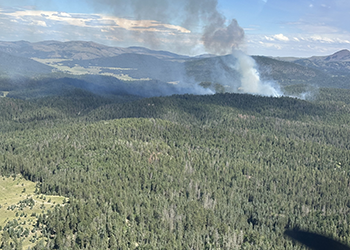
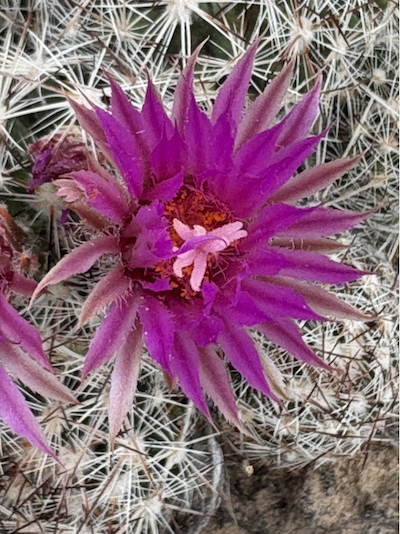
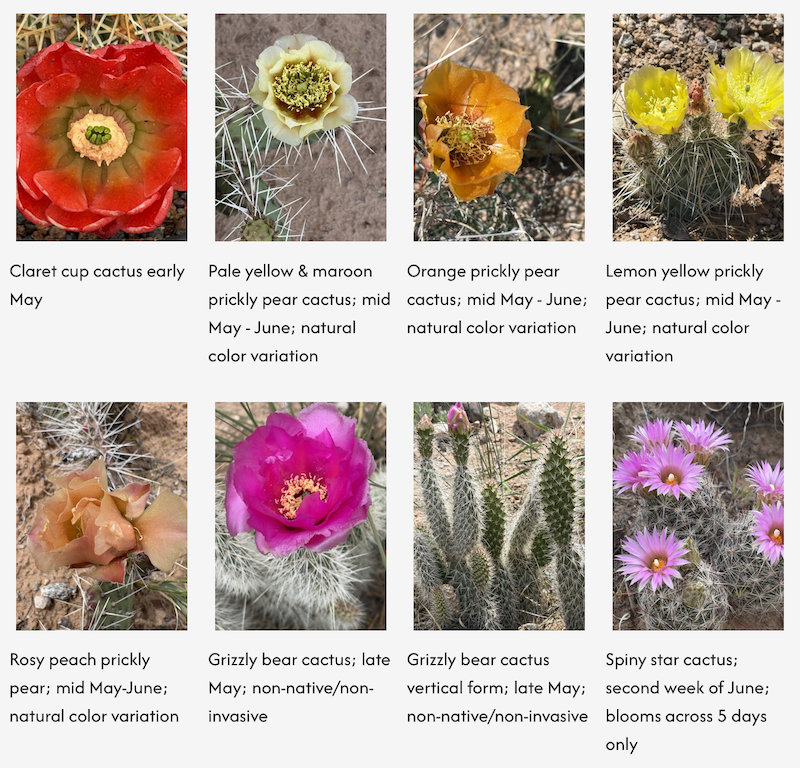
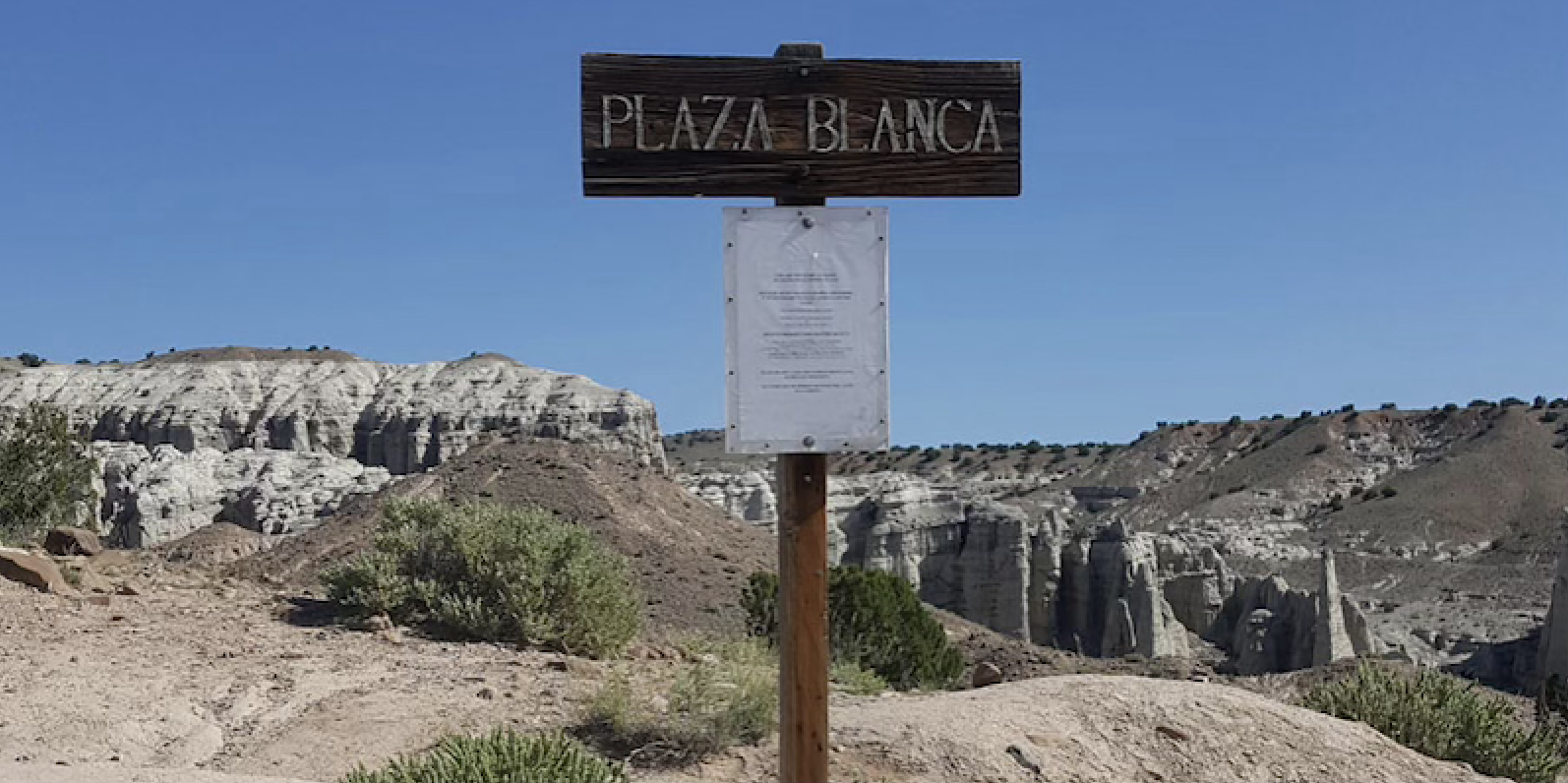


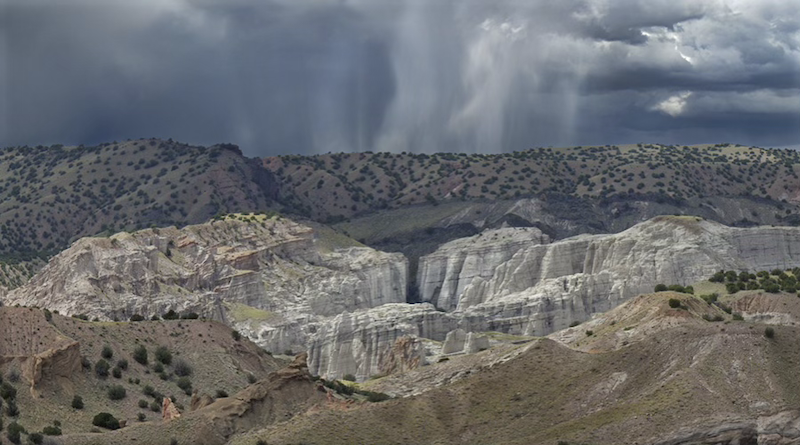

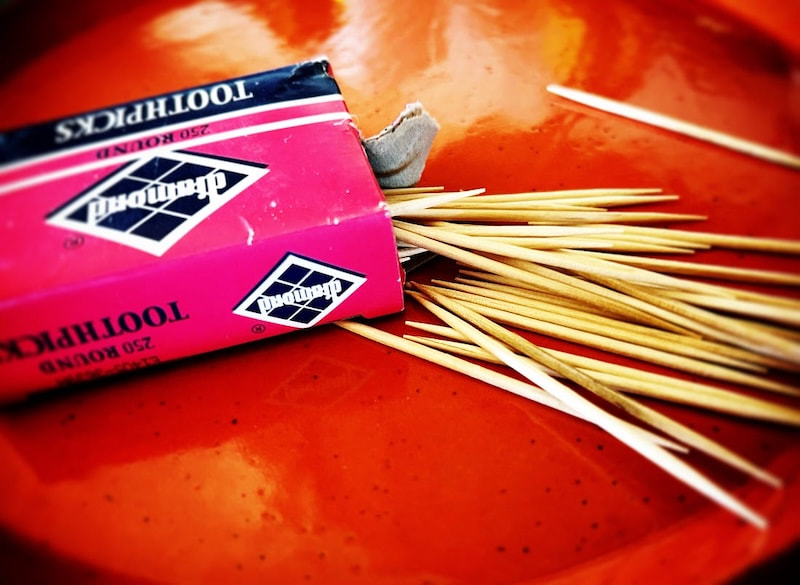
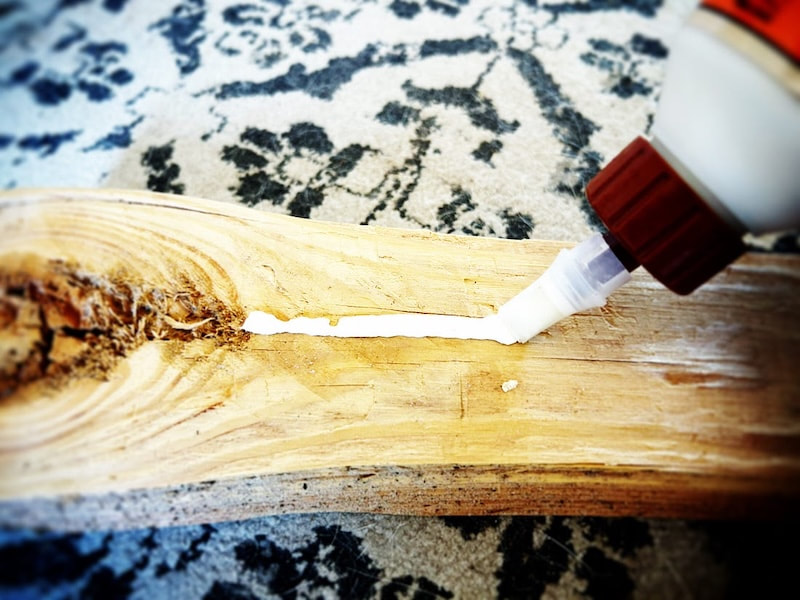


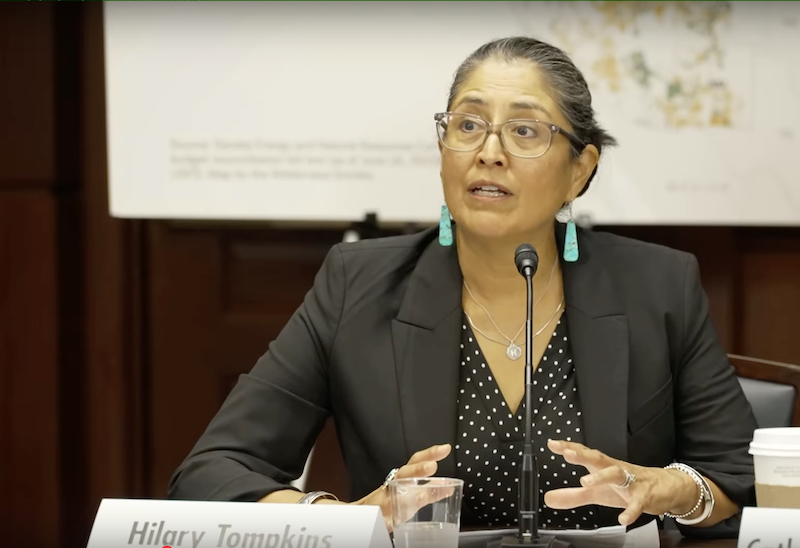
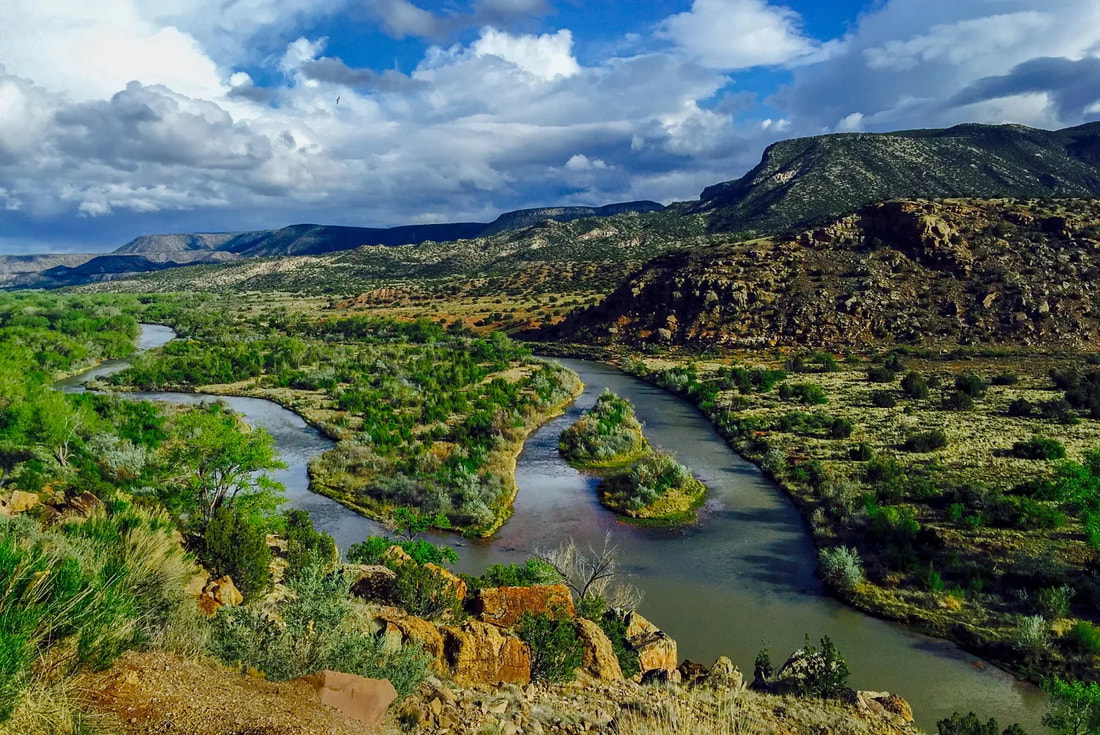

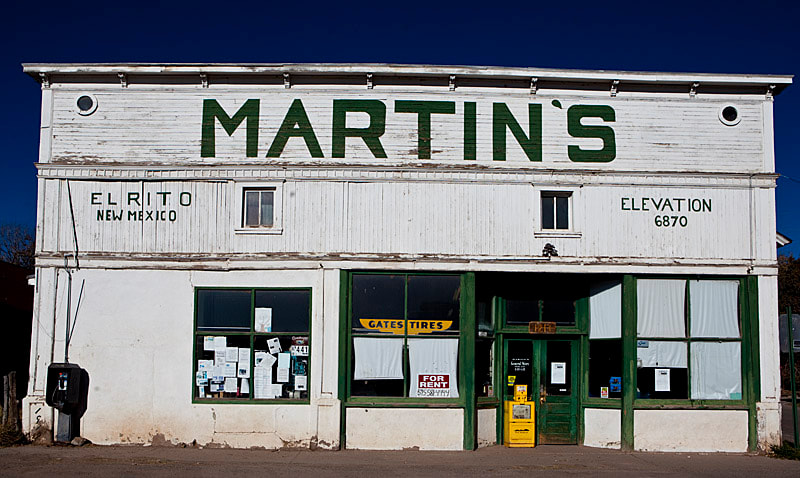
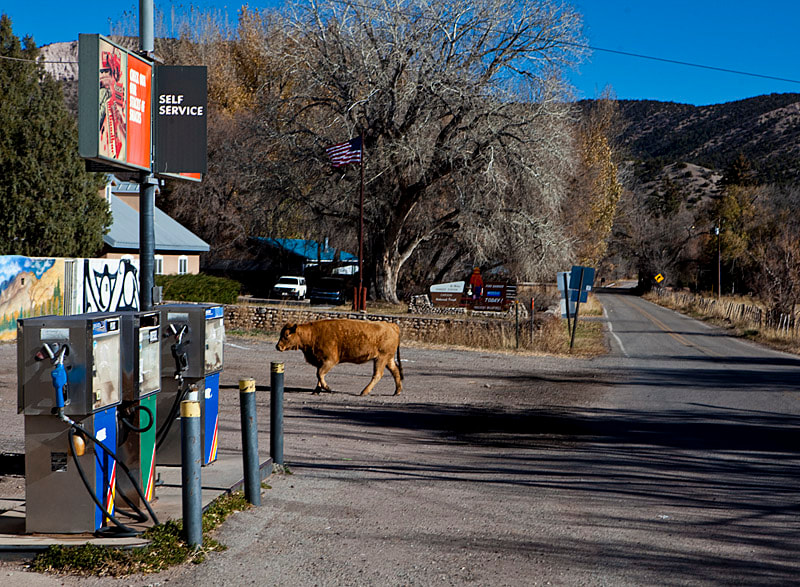

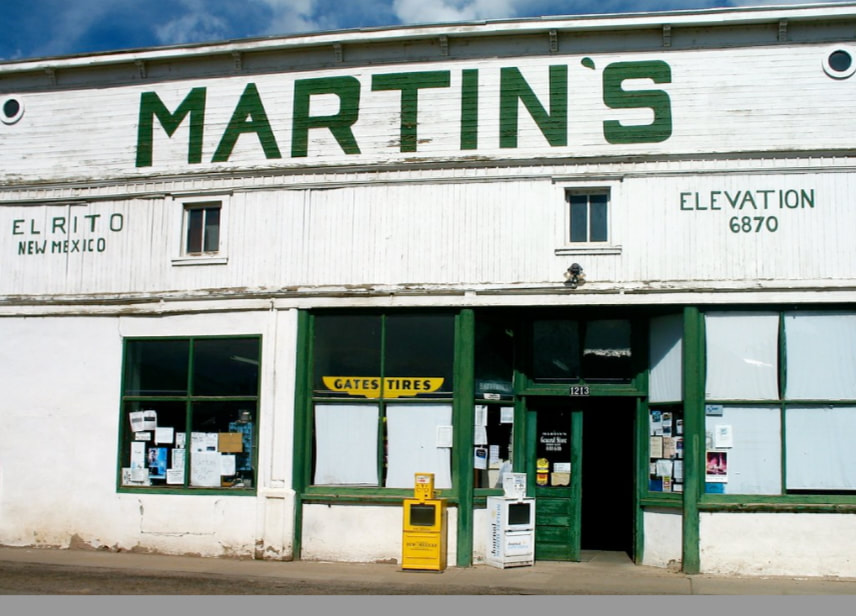

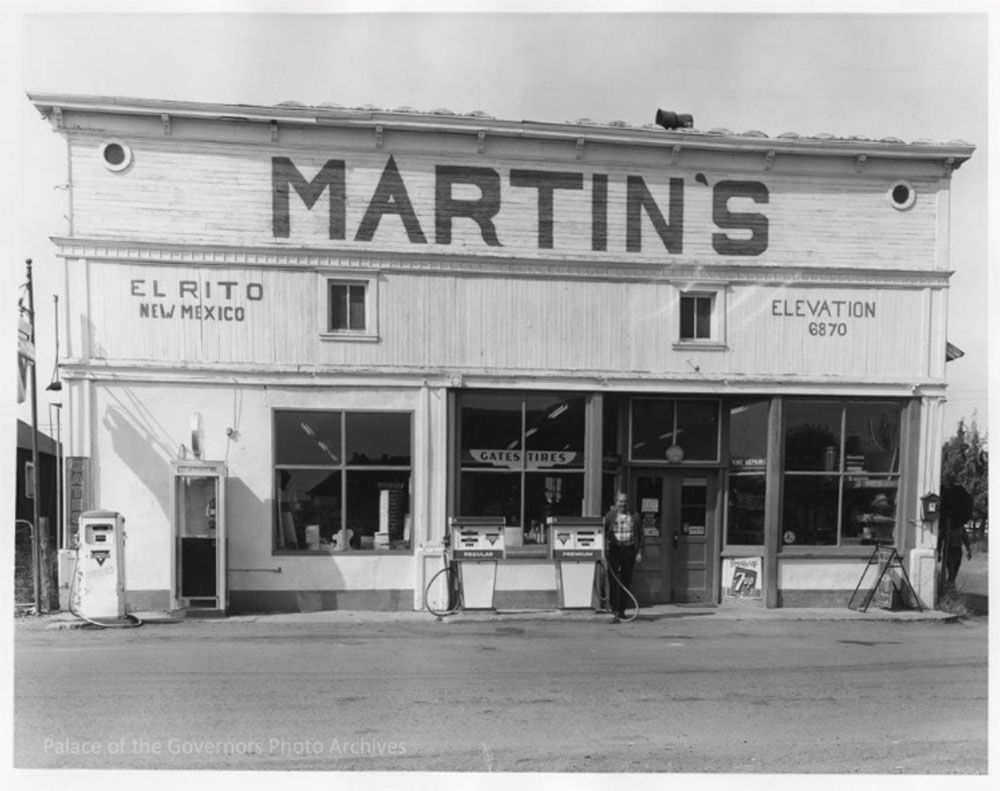

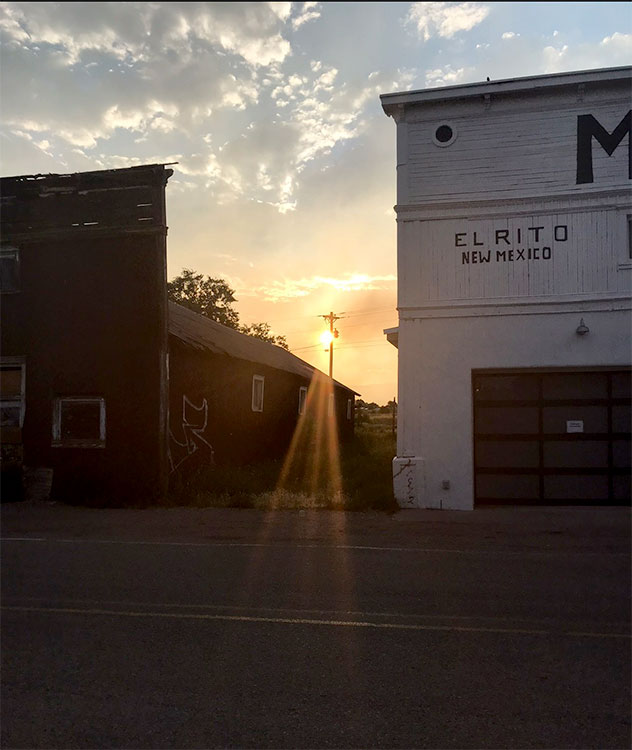
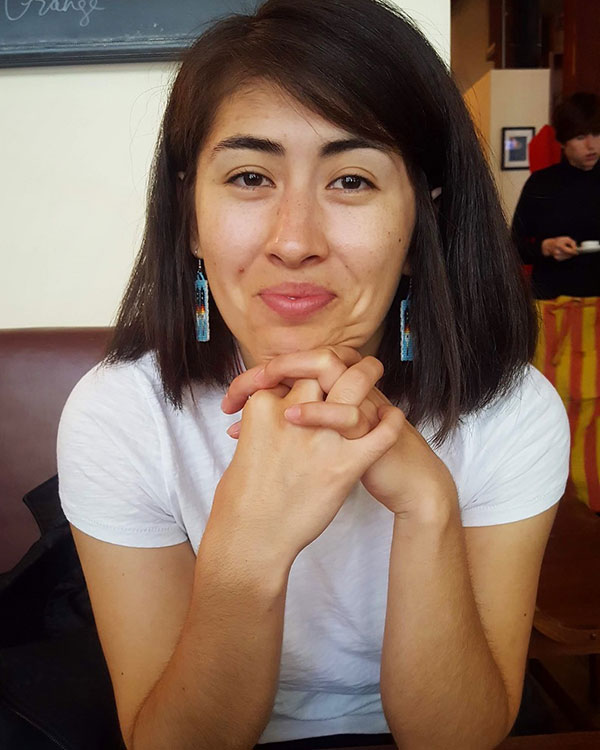

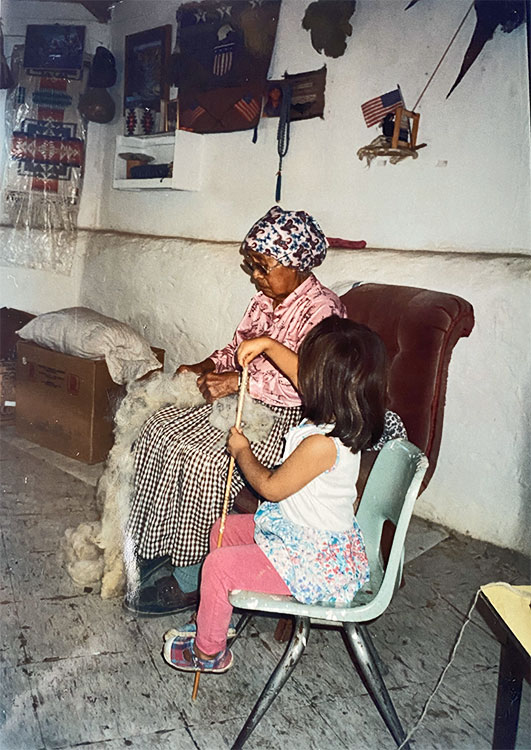

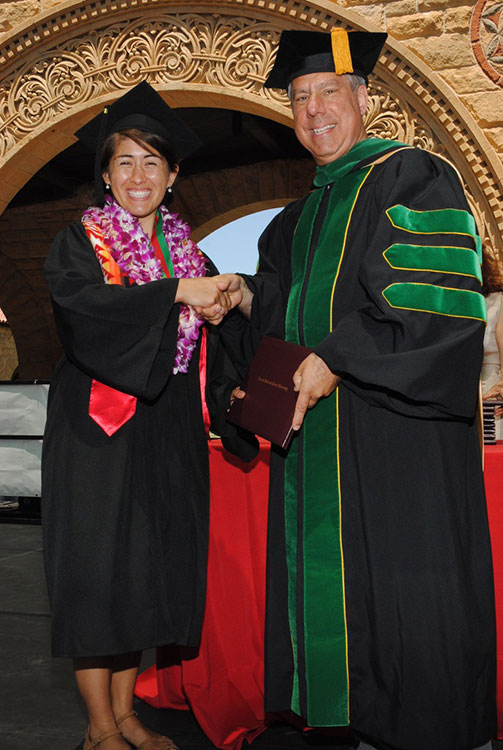

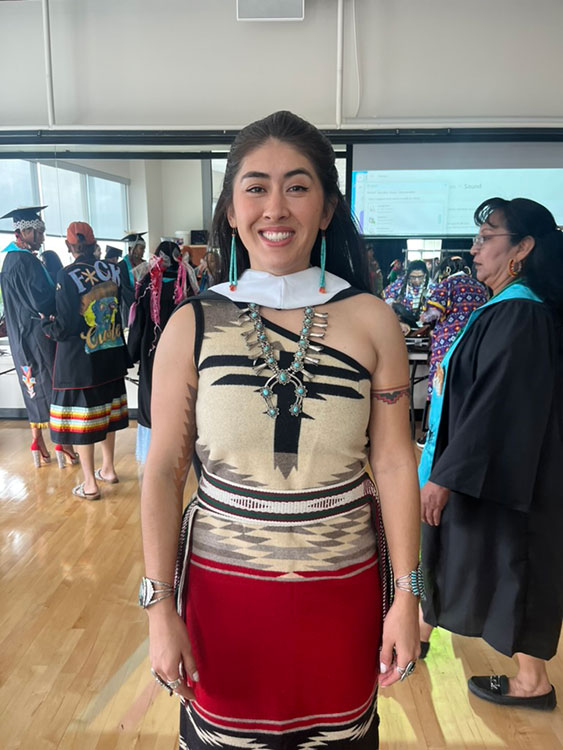
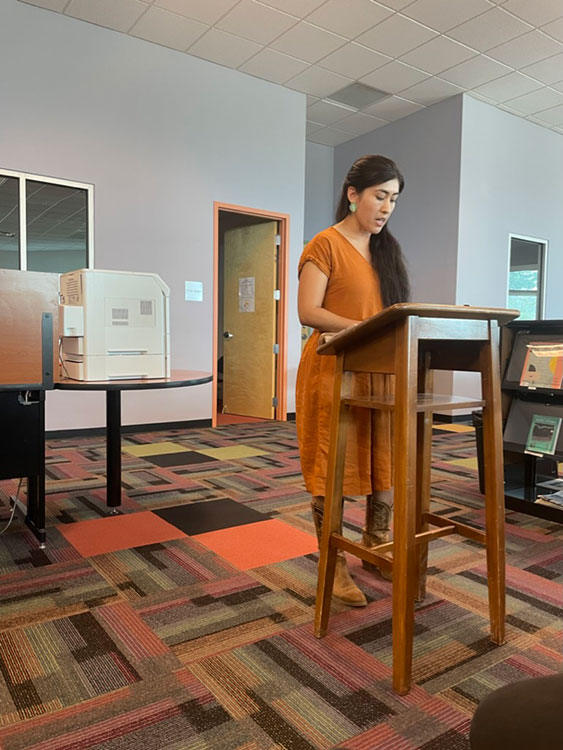
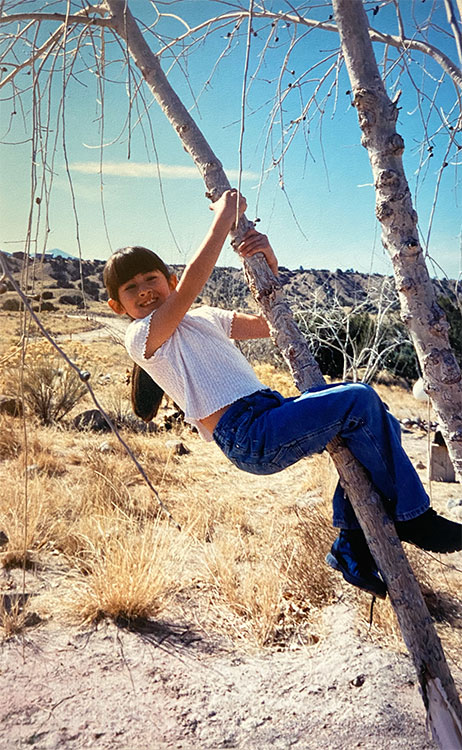
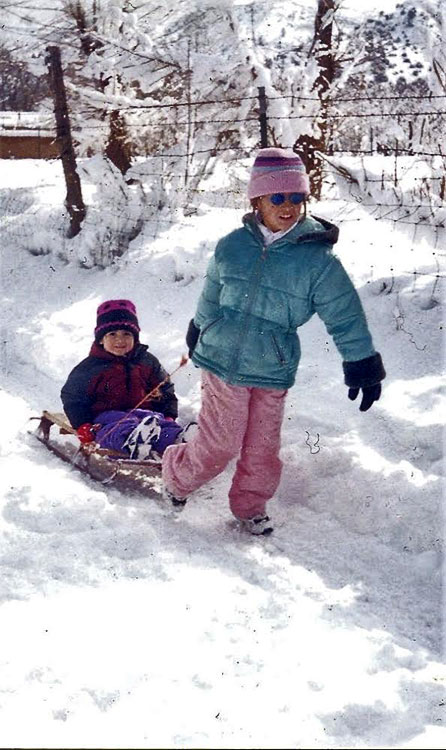
 RSS Feed
RSS Feed